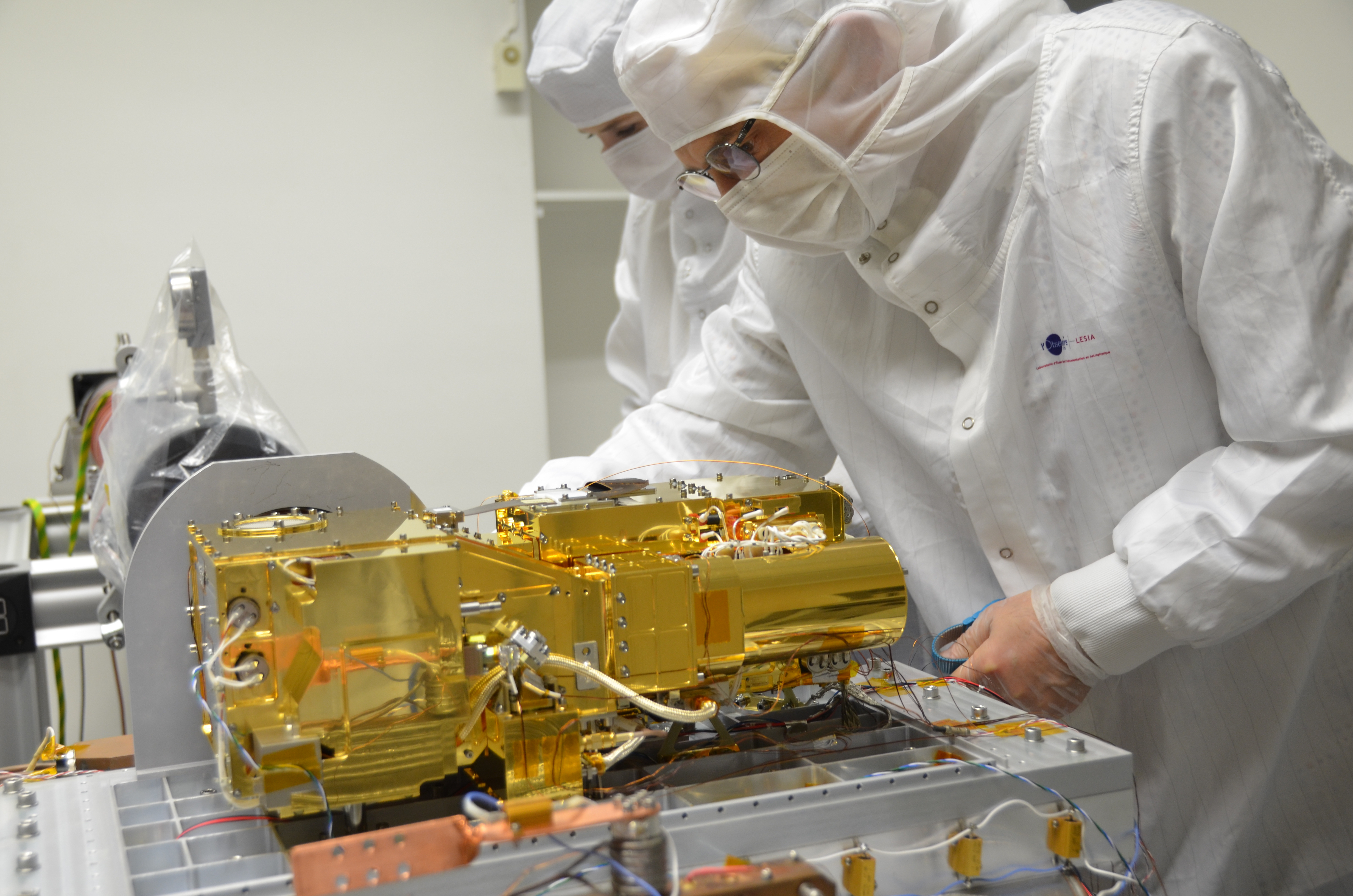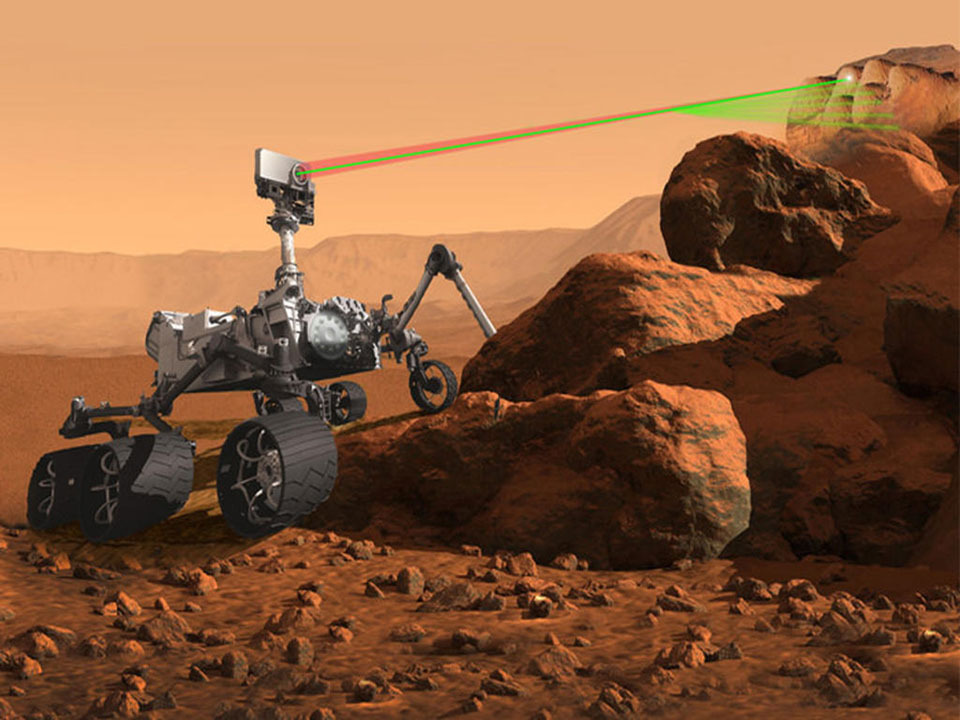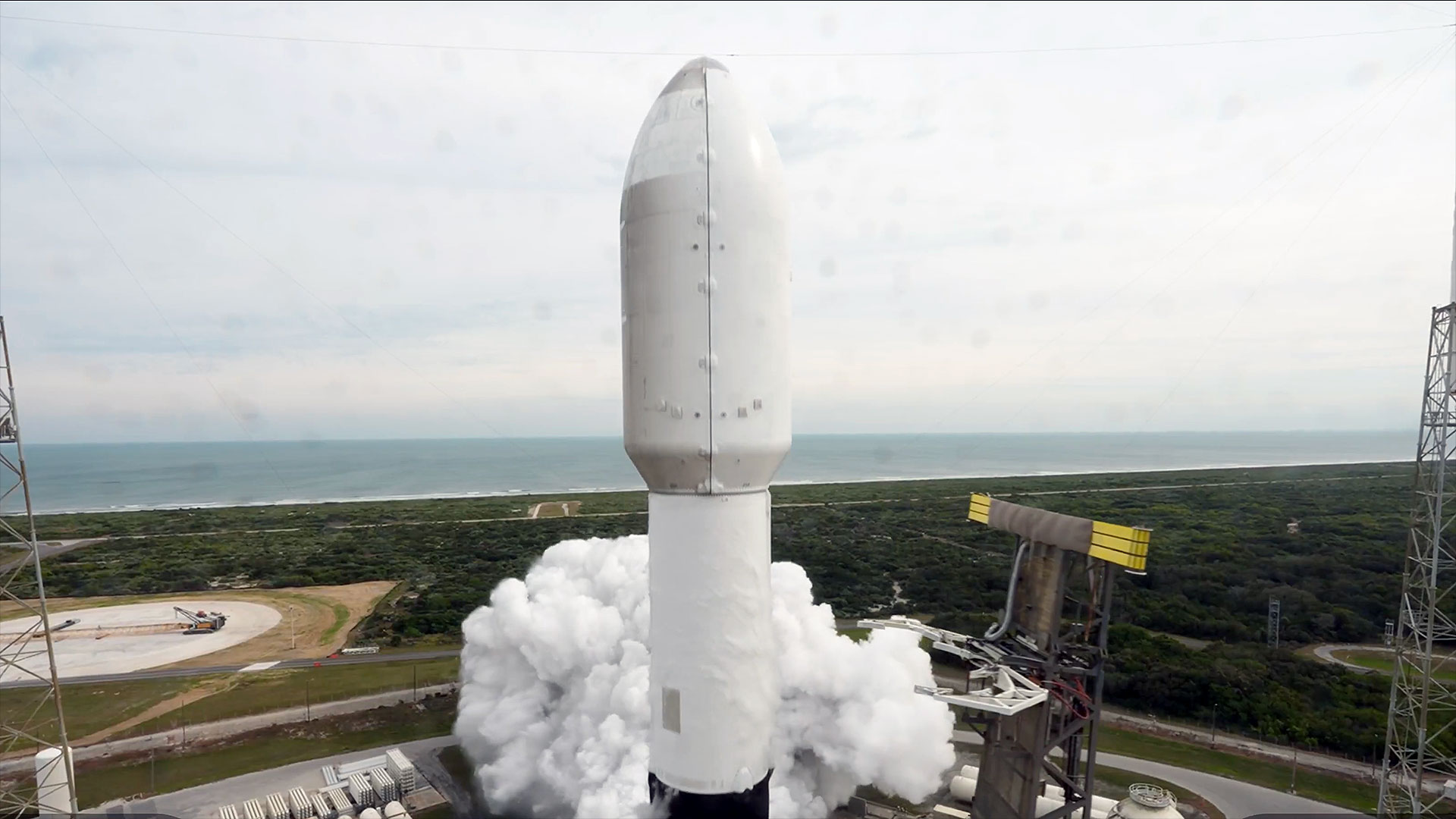Zap! Scientists Fire Laser for NASA's Mars 2020 Rover for 1st Time
The SuperCam's laser systems will be used to study Mars' geologic past.
NASA's Mars 2020 rover reached another milestone with the first successful test of its SuperCam instrument.
SuperCam is a remote-sensing instrument that uses laser-induced breakdown spectroscopy (LIBS) and will launch with the rover in July 2020. It is designed to study the mineral composition, hardness and texture of rocks and soils on the Martian surface, and search for organic compounds that could be related to the Red Planet's geologic past.
"As a cold and dry planet, Mars' surface has remained pristine for the last several billion years. However, early in Mars' history it had a warmer and wetter climate, with precipitation, rivers and lakes," Roger Wiens, principal investigator for the SuperCam instrument, told Space.com. "Given this Earth-like early environment, we want to know if Mars harbored life, and if so, what happened to it."
Related: Mars 2020: The Red Planet's Next Rover
Researchers at the Los Alamos National Laboratory recently tested the instrument's ability to focus on a target, take a picture, and then record spectra while firing the laser. For the test, researchers used a block of calcite rock and were able to get a nice picture and spectral signals of the calcite minerals, Wiens said.
The SuperCam is mounted to one side of the mast unit, or "head," of the Mars 2020 rover. It is an advanced version of the ChemCam instrument on NASA's Curiosity rover, which is currently exploring Mars.
The ChemCam instrument fires an infrared laser beam at Martian rocks and soils within 25 feet of the rover and observes the light emitted from plasma created by the laser pulse. In turn, researchers are able to measure the elements present in the sample and better understand the planet's surface geology, according to The Planetary Society.
Breaking space news, the latest updates on rocket launches, skywatching events and more!
The SuperCam instrument will operate similarly, with two additional mineralogy techniques: reflectance spectroscopy using visible and infrared light and the first remote Raman spectroscopy to be used on another planet, Wiens told Space.com.
Raman spectroscopy uses a softer, green laser beam to stimulate molecules on the surface of a rock or soil. With Raman spectroscopy, a small fraction of the laser light interacts with the molecules of the target sample, changing the wavelength in proportion to the vibrational energy of the molecular bonds. Therefore, the returned Raman light can be used to identify the minerals in the sample, Wiens said.
"Living organisms alter the chemistry and mineralogy of a planet both locally and globally," Wiens said. "Chemistry and mineralogy instruments help us understand the possibility of life on Mars, and they discover many clues to the nature of the environment such as where liquid water existed, its pH, oxidation level, duration, evaporation rate, and the source of its sediments."
In addition, SuperCam is equipped with a remote micro-Imager that provides color images and a microphone that will be able to record sound for the first time on Mars.
"Microphone recordings of the laser-produced shock waves will provide a measure of the rock hardness based on changes in the 'zapping' sounds as the laser beam profiles into the rock," Wiens said.
The microphone can also be used to study wind sounds produced by gusts and turbulence, as well as sounds produced by the rover as it traverses Mars. The SuperCam's infrared spectrometer and microphone will undergo further tests in preparation for the 2020 launch.
- NASA's Mars 2020 Rover Ready for High-Def Camera Eyes
- You Can Help Judge the Mars 2020 Rover-Naming Contest
- NASA Puts Mars 2020 Rover's Space Ride to the Test (Photo)
Follow Samantha Mathewson @Sam_Ashley13. Follow us on Twitter @Spacedotcom and on Facebook.

Samantha Mathewson joined Space.com as an intern in the summer of 2016. She received a B.A. in Journalism and Environmental Science at the University of New Haven, in Connecticut. Previously, her work has been published in Nature World News. When not writing or reading about science, Samantha enjoys traveling to new places and taking photos! You can follow her on Twitter @Sam_Ashley13.


